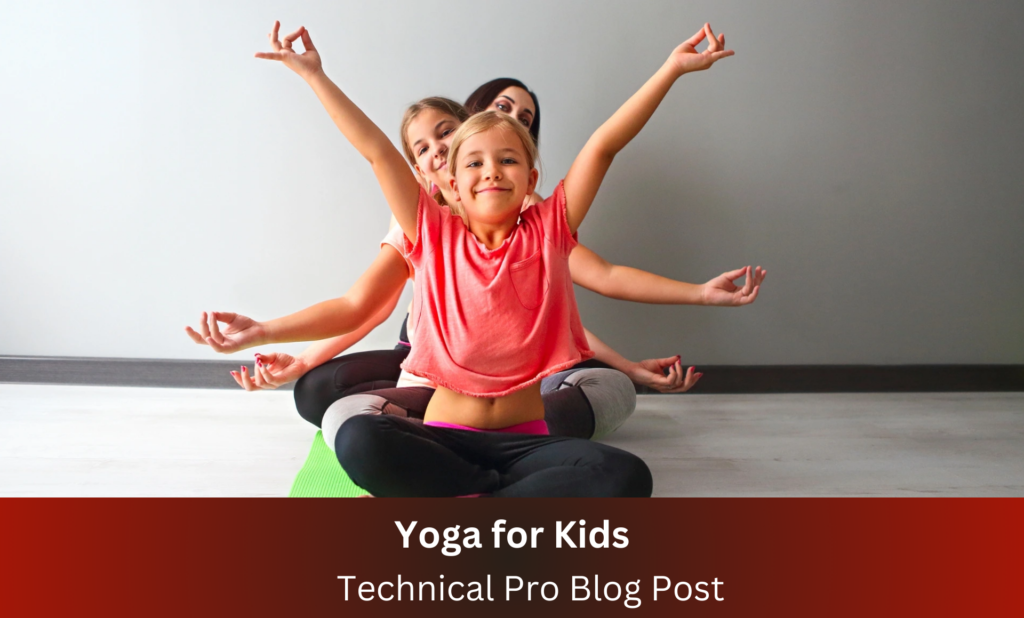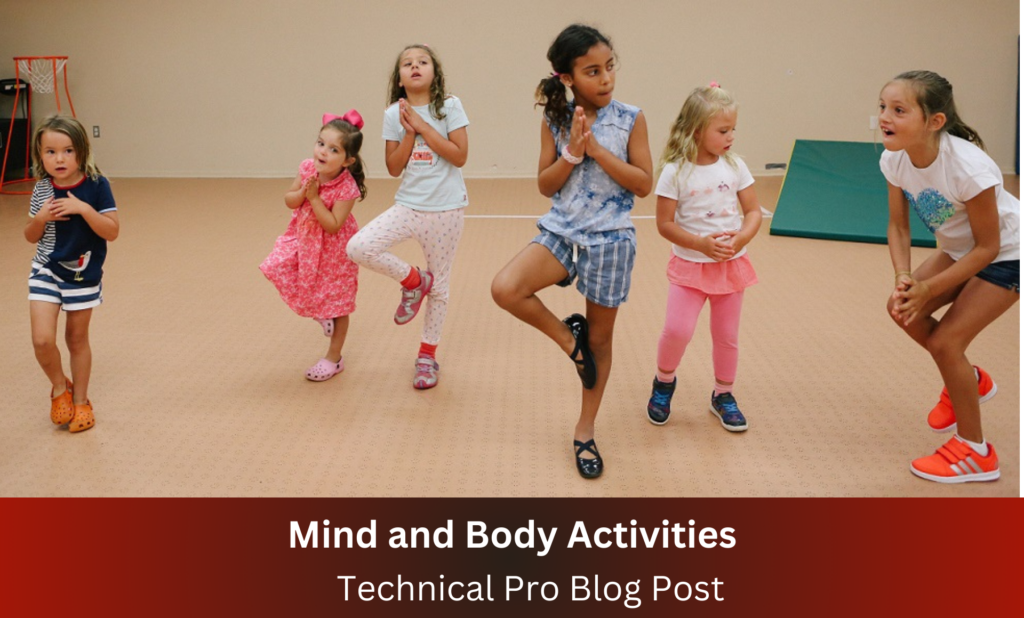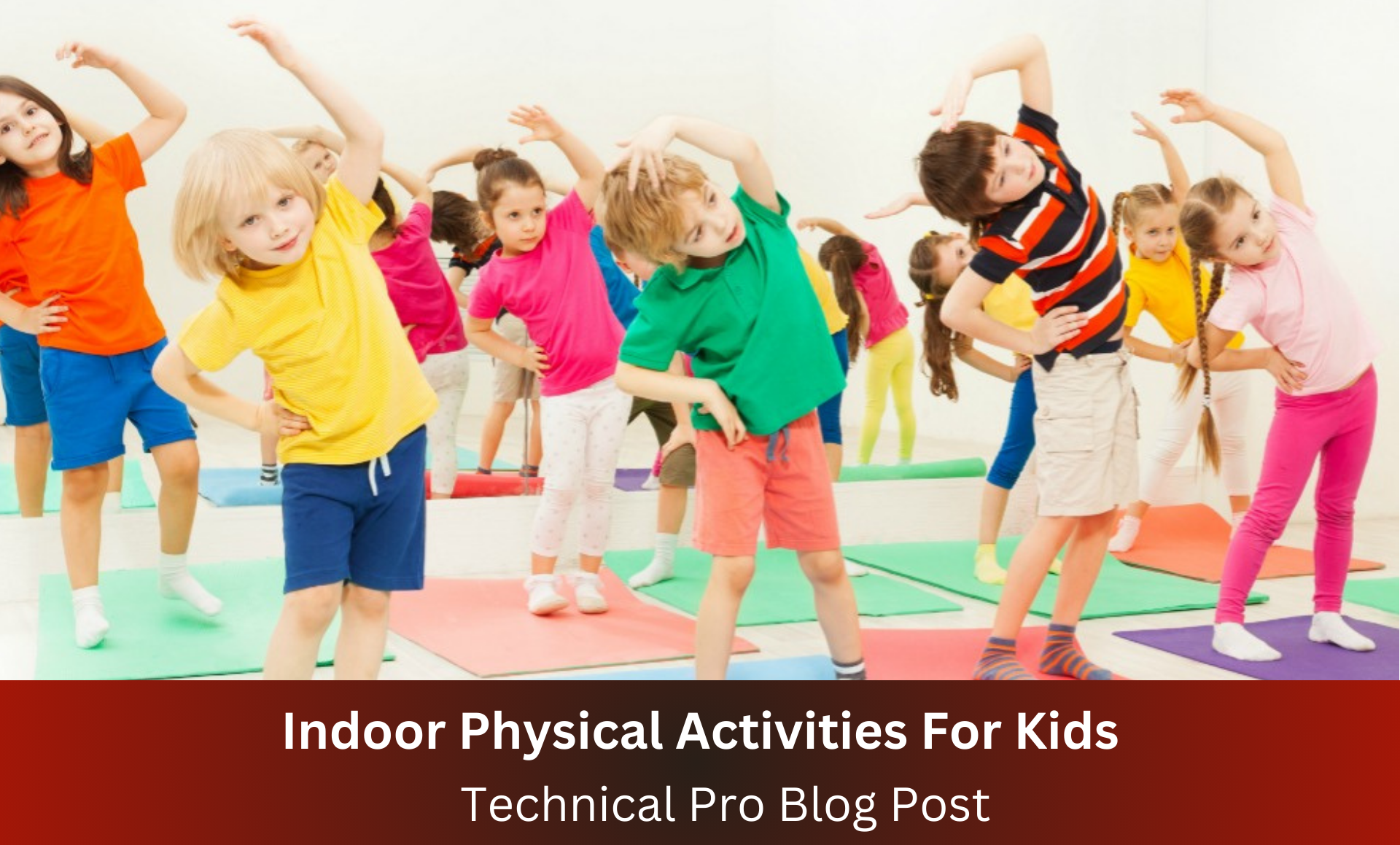Physical activities for kids is crucial for children’s physical, mental, and emotional development. Regular exercise helps kids build strong bones and muscles, maintain a healthy weight, and reduce the risk of developing chronic diseases. Additionally, Indoor Physical Activities For Kids can improve mood, boost energy levels, and enhance cognitive functions such as concentration and memory.
But what happens when going outside isn’t an option? Indoor physical activities become essential. They ensure that children remain active and healthy even when they can’t play outside. These activities also provide a safe space where kids can be physically active without the risk of outdoor hazards.
Read more about the benefits of physical activities here.
2. Creating a Safe Indoor Space
Before starting any indoor physical activities, it’s important to create a safe environment. Clear the area of any breakable items, sharp objects, and obstacles that could cause accidents. Use soft mats or rugs to cushion falls and ensure there is enough space for kids to move around freely.
Safety Tips:
- Remove fragile items and sharp objects: Make sure the play area is free from anything that could cause injury.
- Use non-slip mats or rugs: This helps prevent slips and falls.
- Ensure the space is well-lit: Good lighting reduces the risk of accidents.
- Supervise children during activities: Always keep an eye on kids to ensure they are playing safely.
For more detailed safety tips, visit Fitness Connection Mesquite.
3. Simple Indoor Exercises For Indoor Physical Activities
Sometimes, the simplest exercises are the most effective. Here are a few easy-to-do indoor exercises that can keep your kids moving:
Jumping Jacks: A classic exercise that’s great for getting the heart rate up.
Running in Place: Perfect for burning off excess energy.
High Knees: This exercise helps with coordination and balance.
Bear Crawls: Fun and challenging, bear crawls are great for strength and agility.
Skipping Rope: If you have enough space, skipping rope can be an excellent cardiovascular workout.
Tips for Simple Exercises:
- Set a timer: Use a timer to keep track of how long they do each exercise.
- Create a circuit: Combine several exercises into a fun circuit that kids can rotate through.
- Incorporate music: Play their favorite tunes to keep them motivated.
4. Dance Parties

Turn up the music and let your kids dance their hearts out. Dancing is a fantastic way to get moving and have fun at the same time. Create a playlist of their favorite songs and encourage them to dance along. You can even make it more interesting by organizing a dance-off or teaching them new dance moves.
Benefits of Dance Parties:
- Improves cardiovascular health: Dancing gets the heart pumping and improves overall fitness.
- Enhances coordination and rhythm: Learning new moves helps with motor skills.
- Boosts mood and reduces stress: Dancing releases endorphins, making kids feel happier.
- Encourages creativity and self-expression: Kids can express themselves through movement.
Check out some fun dance routines on this site.
5. Obstacle Courses For Indoor Physical Activities
Setting up an indoor obstacle course can be a thrilling adventure for kids. Use household items like pillows, chairs, and blankets to create a challenging course. Include activities like crawling under tables, jumping over pillows, and balancing on a line of tape.
Tips for Creating an Obstacle Course:
- Plan the course based on your child’s age and abilities: Make sure the activities are appropriate for their skill level.
- Include a variety of activities: Mix up different types of movements to keep it interesting.
- Change the course regularly: Keep things fresh by rearranging the obstacles.
- Supervise to ensure safety: Always watch to make sure they’re playing safely.
For more ideas, visit Fitness Connection Mesquite.
6. Interactive Video Games
Not all screen time is bad, especially when it involves Indoor Physical Activities For Kids. Interactive video games, such as those played on the Nintendo Wii or Xbox Kinect, can get kids moving and engaged. These games often include dancing, sports, and fitness activities that are both fun and physically demanding.
Popular Interactive Games:
- Just Dance: Great for learning new dance moves and having fun.
- Wii Sports: Offers a variety of sports simulations like tennis and bowling.
- Kinect Adventures: Includes different physical activities challenges and adventures.
- Ring Fit Adventure: Combines exercise with an adventure game, making workouts fun.
For more fitness games, check out this link.
7. Yoga for Kids

Yoga is not only relaxing but also a great way to improve flexibility, strength, and balance. There are many yoga poses specifically designed for children that are easy to learn and perform. Yoga can also help kids develop mindfulness and reduce stress.
Kid-Friendly Yoga Poses:
- Tree Pose: Helps with balance and concentration.
- Downward Dog: Stretches the whole body and improves strength.
- Cat-Cow Stretch: Increases flexibility in the spine.
- Butterfly Pose: Opens the hips and improves flexibility.
- Child’s Pose: Provides relaxation and stretches the back.
Benefits of Yoga:
- Enhances flexibility and balance: Yoga poses improve overall body flexibility.
- Promotes relaxation and stress relief: Helps calm the mind and reduce anxiety.
- Improves focus and concentration: Mindfulness aspects of yoga enhance mental clarity.
- Supports physical and mental well-being: A holistic approach to health.
Learn more about the benefits of yoga at Fitness Connection Mesquite.
8. Indoor Sports For physical activities
You don’t need a large space to play sports indoors. There are many sports activities that can be adapted for indoor play. Some ideas include:
Mini Basketball: Use a soft ball and a mini hoop or even a laundry basket.
Soccer: Use a small, soft ball and set up goals with cones or cushions.
Balloon Volleyball: Hit a balloon over a string tied between two chairs.
Bowling: Set up plastic bottles as pins and use a soft ball.
Tips for Indoor Sports:
- Use soft, safe equipment: Ensure that all balls and equipment are safe for indoor use.
- Clear enough space: Make sure there’s enough room to move without hitting anything.
- Encourage teamwork: Promote playing in teams to enhance social skills.
For more indoor sports ideas, visit Fitness Connection Mesquite.
9. Creative Movement Activities
Encourage your kids to use their imagination while being active. physical activities Creative movement activities can include:
Animal Walks: Have your child mimic different animals by crawling like a bear, hopping like a frog, or waddling like a duck.
Freeze Dance: Play music and have your kids dance. When the music stops, they must freeze in place.
Imaginative Play: Create scenarios where your kids pretend to be explorers, superheroes, or dancers.
Benefits of Creative Movement:
- Enhances creativity and imagination: Kids can express themselves and think creatively.
- Improves physical fitness: Moving in different ways works various muscle groups.
- Encourages social interaction: Kids can play together and learn to cooperate.
Find more creative activities at this link.
10. Balancing and Coordination Activities
Developing balance and coordination is essential for children’s physical activities development. Here are a few fun activities to help with these skills:
Balancing on One Foot: Have your child practice standing on one foot for as long as they can.
Tightrope Walking: Place a piece of tape on the floor and have your child walk along it as if it were a tightrope.
Hopscotch: Create a hopscotch grid with tape on the floor.
Bean Bag Toss: Throw bean bags into a target to improve hand-eye coordination.
Tips for Balancing and Coordination:
- Start with simple tasks: Begin with easier activities and gradually increase difficulty.
- Use rewards: Give small rewards for completing tasks to keep kids motivated.
- Practice regularly: Consistent practice helps improve skills over time.
For more ideas on balancing activities, check out this site.
11. Scavenger Hunts
Scavenger hunts can be both exciting and physically engaging. Create a list of items for your kids to find around the house. You can make it more challenging by adding clues or having them perform a physical activities task before they can move to the next clue.
Ideas for Scavenger Hunt Items:
- A book with a red cover: Encourages reading.
- A spoon: Common household item.
- A toy car: Easy to find and fun.
- Something soft: Can be a stuffed animal or pillow.
- An item with the number 5 on it: Teaches number recognition.
Tips for Scavenger Hunts:
- Make it educational: Include items that teach colors, shapes, or numbers.
- Add physical challenges: Include tasks like jumping jacks or running in place.
- Work in teams: Encourage teamwork and cooperation.
Find more scavenger hunt ideas here.
12. Mind and Body Activities

Combining physical activities and mental exercises can be highly beneficial for kids. Activities that engage both the mind and body can improve overall development.
Simon Says: A classic game that requires listening and quick reactions.
Memory Game with Movement: Create a memory game where kids have to perform an action when they find a match.
Follow the Leader: One child performs an action and the others must follow.
Benefits of Mind and Body Activities:
- Enhances cognitive skills: Improves memory, concentration, and problem-solving.
- Promotes physical fitness: Engages various muscle groups and improves coordination.
- Encourages social interaction: Kids learn to follow directions and cooperate.
For more mind and body activities, visit this link.
13. Tips for Keeping Kids Engaged
Keeping kids engaged in physical activities can sometimes be challenging. Here are some tips to ensure they stay interested and active:
Make It Fun: Incorporate games and activities that they enjoy.
Be a Role Model: Participate in the activities with them.
Set Goals: Help your kids set achievable goals and celebrate their accomplishments.
Variety is Key: Regularly change activities to keep things fresh and exciting.
Additional Tips:
- Use rewards: Small rewards can motivate kids to participate.
- Create a routine: Regular activity times can help establish a habit.
- Invite friends: Social interactions can make activities more enjoyable.
For more tips on keeping kids engaged in fitness, visit Fitness Connection Mesquite.
14. Conclusion
Indoor physical activities for kids are essential for their overall development and well-being. By incorporating a variety of fun and engaging activities, you can ensure that your children remain active, healthy, and happy, even when they can’t go outside. Remember to create a safe environment, keep things interesting, and join in the fun whenever possible.
For more ideas and tips, check out Fitness Connection Mesquite.
15. FAQs
1. What are some easy indoor exercises for kids?
Some easy indoor exercises for kids include jumping jacks, running in place, high knees, bear crawls, and skipping rope.
2. How can I make indoor physical activities fun for my kids?
You can make indoor activities fun by incorporating games, setting up obstacle courses, having dance parties, and participating in the activities with them.
3. What are the benefits of indoor physical activities for kids?
Indoor physical activities help improve cardiovascular health, build strength, enhance coordination, boost mood, and provide a safe environment for kids to be active.
4. How much physical activity do kids need each day?
The CDC recommends that children and adolescents aged 6 to 17 years should have at least 60 minutes of physical activity each day.
5. Can video games be a good source of physical activity for kids?
Yes, interactive video games that involve physical movement can be a great way for kids to stay active and have fun indoors.
